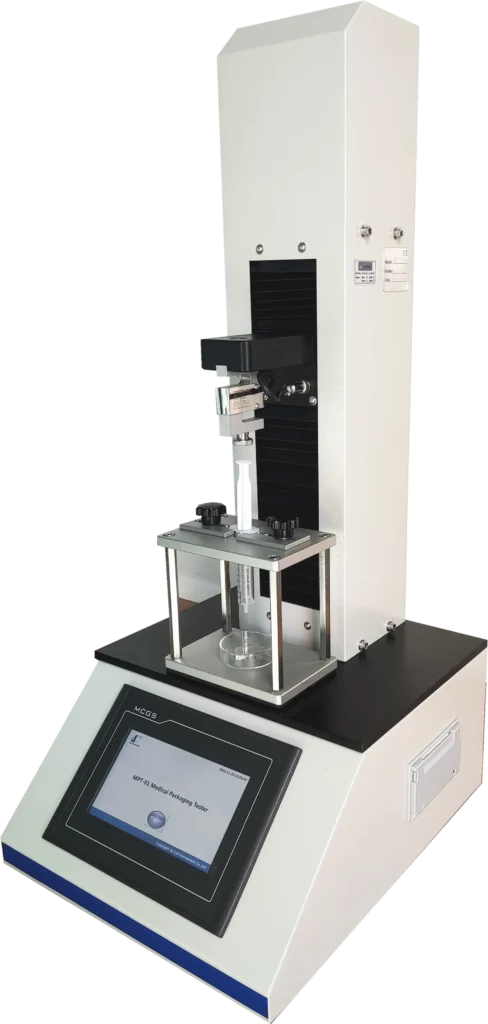Syringe Leakage Testing
ISO 11040-4 Annex G2
In the field of pharmaceutical and medical device manufacturing, syringe leakage testing is a critical quality assurance process. It ensures that prefilled syringes maintain sterility and do not leak during transport, storage, or use. To meet stringent regulatory expectations, manufacturers must follow international standards such as ISO 11040-4, especially Annex G2, which outlines the liquid leakage testing method for syringe closure systems.
What is Syringe Leakage Testing?
Syringe leakage testing evaluates whether a syringe’s closure system—either a needle shield or tip cap—can withstand internal pressure without allowing fluid to escape. According to ISO 11040-4 Annex G2, the standard test pressure is 110 kPa, simulating real-world conditions during syringe filling or transportation.
Why It Matters
Leakage not only compromises product sterility but may also cause dosage inaccuracies and safety risks. Following a standardized test procedure ensures consistency, reliability, and regulatory compliance.
ISO 11040-4 Annex G2 Test Requirements
Syringe Leakage Testing Sample
Use only reagents of analytical grade and sterile, ready-to-fill syringe subassemblies. Samples must remain untouched for at least 12 hours after closure setting before testing begins. This retention time ensures closure stabilization.
Syringe Leakage Tester
Annex G2 specifies two main test methods:
- Mechanical pressurization using a universal tensile and compression testing machine
- Compressed air-based pressurization, preferred where wall friction impacts accuracy
Cell Instruments’ MST-01 Medical Syringe Tester offers a comprehensive solution. It supports both force-based and pressure-based testing, ideal for ensuring conformity with ISO standards.

Syringe Leakage Testing Procedure
Insert the syringe into a syringe holder with closure system in place.
Fill with distilled water to 1/3 to 2/3 of nominal volume.
Apply 110 kPa pressure for 5 seconds.
Release pressure and inspect for external droplets or tip cap detachment.
This method replicates overpressure scenarios and confirms the seal integrity.
ISO 11040-4 Testing Interpreting the Results
To pass the test:
- No liquid droplets should be visible around the tip cap or needle shield.
- The closure must remain in place.
- Visual inspection confirms if a syringe passed or failed.
The test report should include:
- Applied pressure or force
- Number of samples tested
- Number passed or failed
- Any deviations observed during the test
Proper documentation is essential for regulatory audits and quality tracking.
Prefilled Syringe Leakage Tester——More Applications
Syringe leakage testing is only one aspect of prefilled syringe testing under ISO 11040-4. Manufacturers also examine:
- Plunger sliding resistance
- Needle penetration force
- Bond strength between needle and hub
- Plunger retention (pull-out)
MST-01 integrates these functions into a single, compact testing unit. It enables full mechanical verification of empty sterile single-use syringes, complying with not only ISO 11040-4 but also ISO 7886-1, ISO 8537, and USP 382.
Why Choose MST-01 for Syringe Leakage Testing
The MST-01 Medical Syringe Tester stands out due to:
- Multi-test capability embedded in one platform
- PLC-controlled system and 7-inch touchscreen
- Precision force and displacement controls
- Real-time monitoring and built-in microprinter
This versatility ensures accurate, efficient, and reproducible syringe leakage testing while meeting global standards. With customizable fixtures and programmable test setups, MST-01 provides a cost-effective and user-friendly solution for pharmaceutical quality control teams.